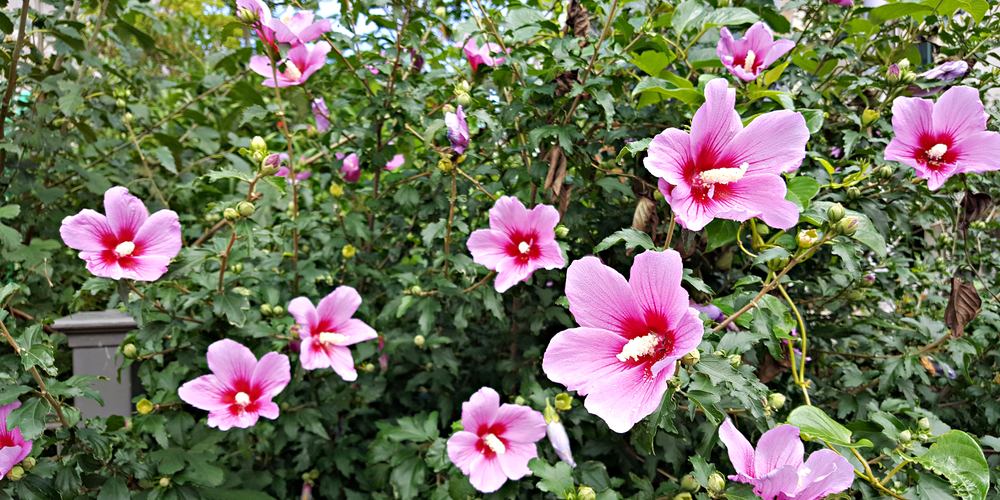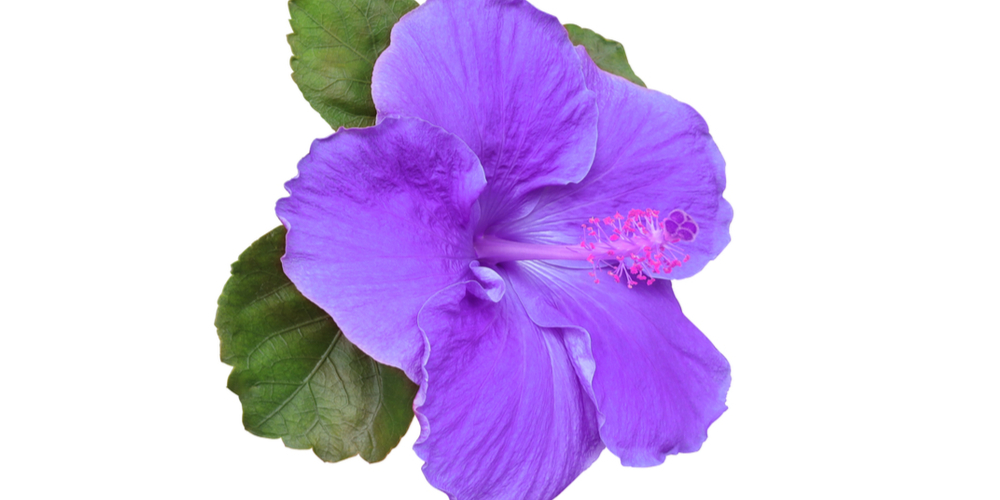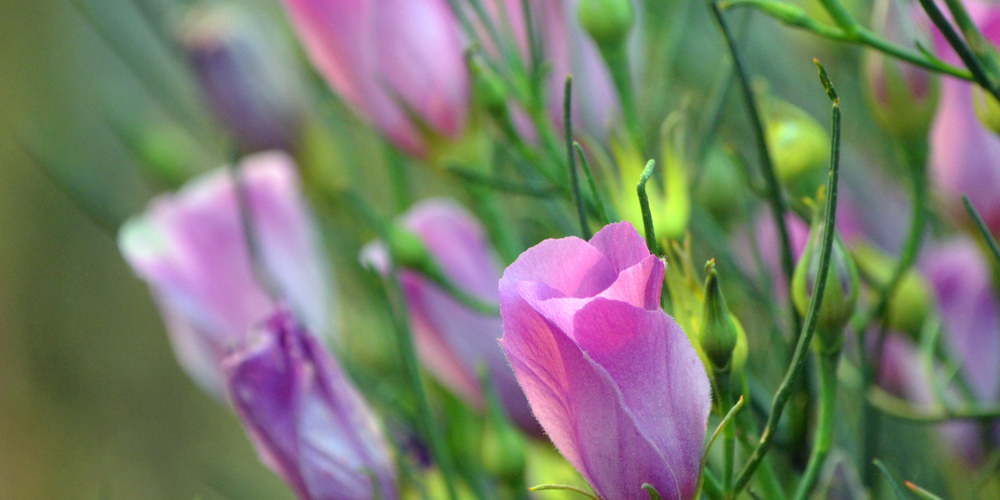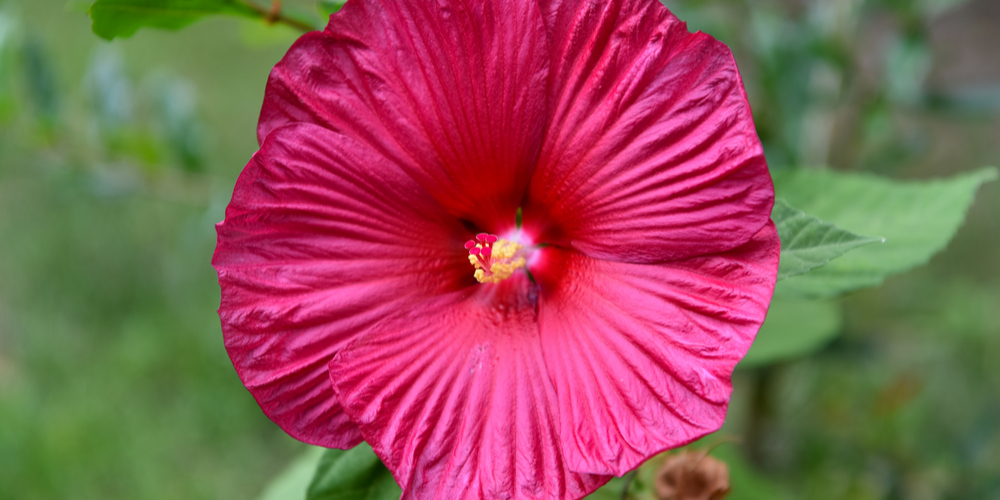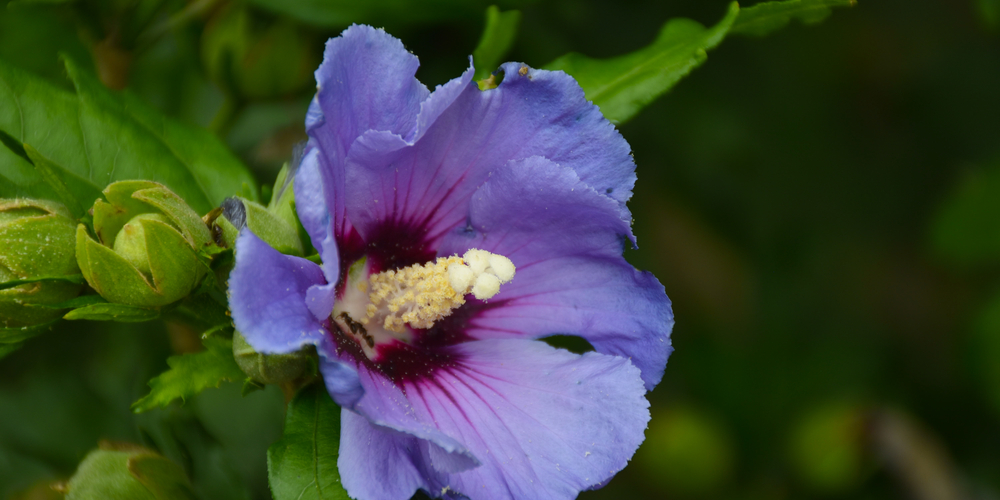The hibiscus flower encompasses genera of shrubs thriving well in sunny weather. They have showy flowers in various shades that include but are not limited to purple, pink, red, white, and yellow. One of the most characteristic common qualities is the funnel shape that gives them a level of prominence that easily captures the eye’s attention. Notably, the individual flowers of the hibiscus may only prosper in one or two days, but their bushes usually blossom every other day of the summer.
People have varying tastes regarding color preferences, a core consideration being the climate of a specific location. Tropical hibiscus plants do well throughout the year but flourish more in USDA zones 9 to 12. On the other hand, hardy hibiscuses thrive in zones 5 to 11. Even so, a few types grow as annuals in areas with a temperate climate. Experts recommend growing flowers in such places in heat-loving shrubs and then putting them indoors during extreme cold seasons, particularly when below 10°C.
Typically, the requirements for hibiscus growth include sufficient sun exposure, well-drained soils, and moist ground.
Which are the 5 Hibiscuses with Purple Flowers?
There are several hibiscuses with purple flowers that include the following.
1. Hibiscus syriacus (Rose of Sharon)
This is a type of hibiscus that exhibits fast-growing characteristics. It is a shrub with large flowers with a trumpet-like appearance. It has classic single or double flowerets that have purple, blue, pink, and red. Typically referred to as the ‘Rose of Sharon,’ Hibiscus syriacus prospers when subjected to sunny weather and well-drained soils. The height range is anywhere between 8 ft and 12 ft. The width may expand up to 3 meters.
2. Hibiscus rosa-Sinensis
This is another type of hibiscus often termed Chinese hibiscus, and China rose, among other names. Typically, it belongs to tropical hibiscuses, flowering plants in the Hibisceae tribe, and the Malvaceae family. It’s ubiquitous in tropical and subtropical areas. People in these regions term this Hibiscus rosa-Sinensis as an ornamental plant.
The plant is green and bushy. It grows to a height in the range of 8ft to 16 ft, while the width ranges anywhere from 5 to 10fts. It has glossy and solitary leaves; the flowers have varying blends, including but not limited to purple, pink, peach, orange, and yellow. Some have double flowers.
3. Alyogyne hakeifolia (Australian Hibiscus)
This type of hibiscus is also referred to by terminologies such as the Desert rose hibiscus, Fugosia hakeifolia, Hibiscus hakeifolius, and Alyogyne lilacina, among others. It is a plant characterized by being evergreen, undivided pinnate, mild-green leaves, hairy, with flowers that are funnels shaped with a purple-pink flower. The purple to pink flowers usually lasts from late spring to the summer season.
Generally, their flowers are purple-pink and lavender during the spring, while purple-pink during the summer. Caring for the shrub includes attentiveness to ensure they are free from aphids, glasshouse red spider mites, and glasshouse whiteflies’ attacks.
4. Hibiscuses with Purple Flowers: Hibiscus moscheutos
Hibiscus moscheutos is a type of hibiscus called Rose mallow, Eastern rosemallow, and Crimsoneyed rosemallow, among others. It belongs to the family Malvaceae. It is one of the few cold-hardy perennial plants in wetlands and grows in large colonies. Typically, the plant is found in the United States, growing in riverine systems. Its flowers typically exhibit a range of colors from purple, white petals, and maroon.
The plant can be planted through seeds, cuttings, or crown divisions during the winter. Caring for this hibiscus includes checking for invasion from Japanese beetles that can destroy the foliage if not dealt with, aphids, and whiteflies.
5. Hibiscus syriacus
This type of hibiscus is found to occur naturally in the Southwest province of Western Australia. Even so, it also extends along the entire coastline. Typically, the shrub does well in sandy soils because of its abundance in occurrence on the Australian coast. It has numerous colors, including purple, mauve, lilac, and yellowish anthers.
The most excellent way to cultivate this flower is by cuttings in soils that are well-drained. It is also vital to avoid frosts while growing the flower.
Hibiscuses with Purple Flowers: Conclusion
Planting flowers in the gardens is a great way to enhance beauty and ambiance. With purple hibiscus flowers in the garden, one is guaranteed a feeling of success and royalty. Furthermore, the flowers enhance feelings of admiration and tradition, among others. It’s vital to grow the plants in well-drained soils and protect them from pests and diseases.
Related article: Hibiscus Tiliaceus Variegata Growth and Care Guide
